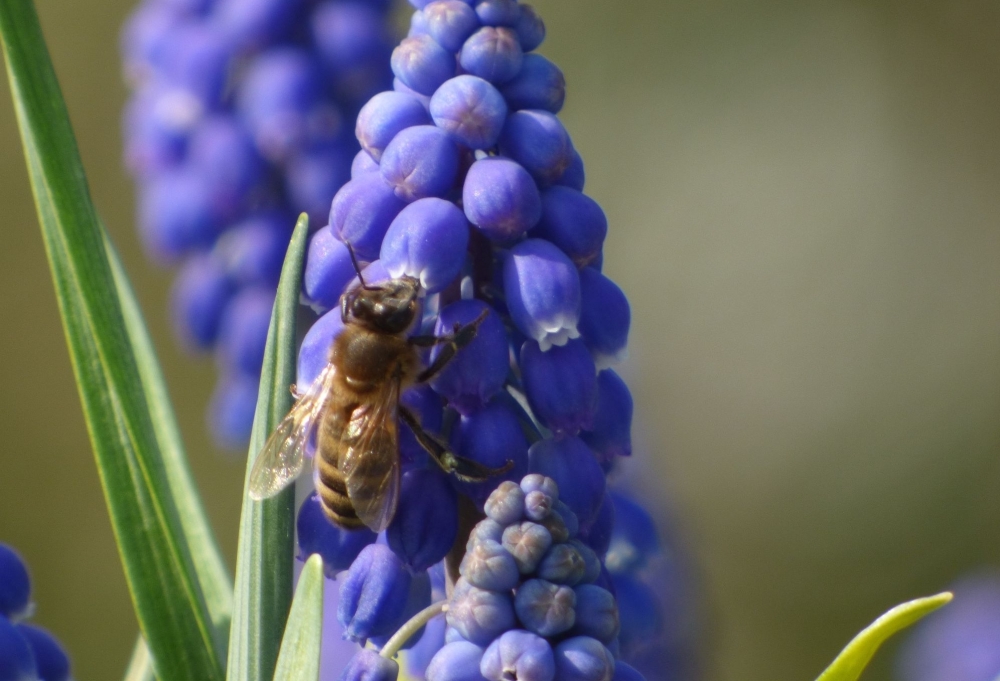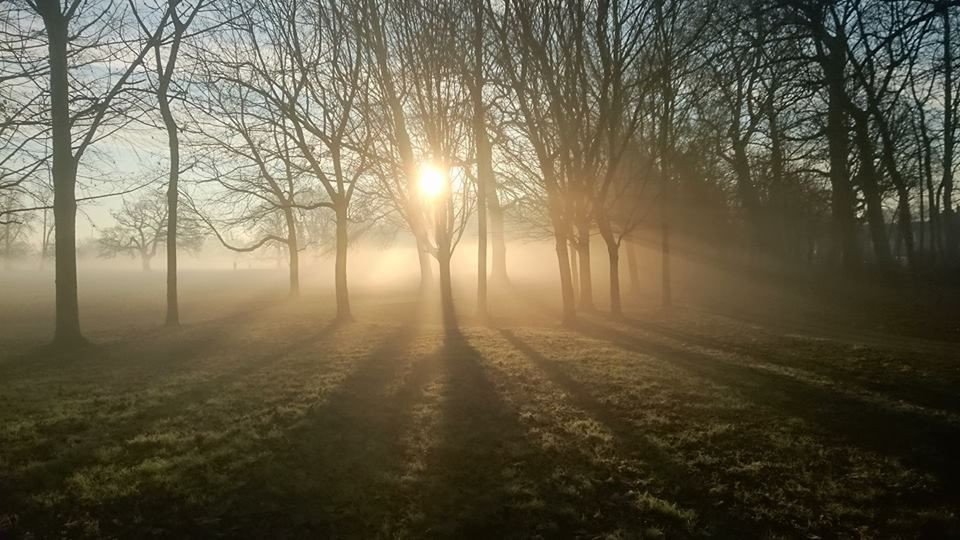Honey Bees Through The Seasons
Posted on
WINTER
It really is a very bleak day here today. Snow is causing chaos over much of the country. We’re luckier than most in our patch in Surrey. We’ve had a little snow, a lot of heavy rain and strong winds. The sky is grey outside the windows.
The Winter Solstice (the shortest day and longest night the year) was last week. Although I doubt any of us have noticed it yet, the sun is gradually growing in strength and the days are starting to get just a tiny bit longer each day.
Photo: Sun rise on the Winter Solstice
During this time the beehives show little or no signs of activity and look abandoned. However inside is a different story.
This extra daylight will soon trigger a change inside the beehives. The worker bees will start to feed the queen bee a little more food. This in turn will trigger her to start laying increasing numbers of eggs.
Photo: Pollen coming into the hive
If the temperature is high enough honey bees will fly during the winter. They’ll collect water to dilute their stores. They’ll also collect pollen if any is available. Pollen is a protein food for bees and so it is especially important for rearing strong healthy brood.
(N.B. Brood is a term used to describe developing bees).
SPRING
As spring arrives the queen continues to lay more and more eggs each day. By the time beekeeper does his/her first spring inspection the brood nest is usually quite large. Forage is absolutely crucial at this time as there are more young bees to be fed. The remaining winter work force is now very elderly and new young bees are urgently needed.
Photo: Honey bee foraging in the spring

Hopefully the days are sunny and mild and the bees are able to fly most days. If so, the population will expand rapidly and quickly outgrow the hive. If the beekeeper doesn’t give the bees some extra room this will trigger the congested bees to swarm. Even with extra room the urge to swarm is strong and the colony may well prepare to swarm.
Swarming is the natural reproduction of the colony. The bees will start to raise a new queen. Once they are assured a new queen is on the way, they will stop feeding the old queen to slim her down ready to fly. On a warm day, usually in the middle of the day, the old queen will leave the hive with many of the older worker bees. Initially the swarm will land quite close by whilst the workers look for a new home to move into. Then all at once they will all take off. For a few moments the sky will be black with bees, but they rapidly disappear from sight on their way to a new home.
Whilst swarms look very scary, the bees are usually very placid as they have no home, stores or young to defend. *
Photo: A bait hive placed near a swarm of bees - these were so placid I had a vest top on and no veil (but don't try this at home!!!!)
For a while the colony the swarm has left from will be quieter, but once the new queen takes over the egg laying duties of her mother, the population will rapidly grow again.
SUMMER
As spring gives way to summer the queen’s rate of lay has increased to up to 2,000 eggs a day!!!! No that wasn’t a typo – it really does say 2,000 eggs a day!!!! All those young bees need feeding so worker bees forage from dawn until dusk (so long as it is warm enough and not raining).
During the summer months colonies can reach 60,000 bees.
The Summer Solstice (the longest day and shortest night) triggers another change in the bees’ behaviour. Now they reduce the amount they feed the queen bee and her rate of lay drops accordingly. This change means there are more adult bees available to forage just in time for the main nectar flow in late July and early August. As there are less young bees to be fed, this means all the surplus nectar can be stored as honey in readiness for the winter months.
Photo: Honey bee foraging on thyme
AUTUMN
During the summer months, worker bees will live for approximately 6 weeks. In the winter months though the workers will live for up to 6 months. The bees being produced in the autumn months need to be especially strong and healthy as these are the bees which will keep the colony going during the winter. They are also the bees who will “kick start” the hive again in the spring at a time when they are very elderly and coming to the end of their days.
Approximately 10,000 bees are needed to see the colony safely through the winter so as the days shorten the colony continues to reduce in size as the older bees die, and less young ones are produced.
Photo: Honey bee foraging on ivy flowers
The bees will continue to forage when conditions are favourable. As the days shorten and get colder the bees will form a cluster. In the middle of the cluster will be the queen bee and any brood, kept warm by the worker bees. The bees on the outside will “shiver” or vibrate their wing muscles which generates heat, keeping the entire cluster warm.

Soon the Winter Solstice will arrive and the cycle will begin again.
Cheeky plug – if you enjoyed this blog and you are a member of a group, you may be interested in booking a talk. Talks are available for all ages groups – please see http://www.thelittlehoneybeecompany.co.uk/talksdemonstrations-workshops.html
* If you see a swarm please don’t panic. Many local beekeepers are happy to collect swarms. If you take a look at the BBKA website you’ll find more details. https://www.bbka.org.uk/help/do_you_have_a_swarm.php
Add a comment: